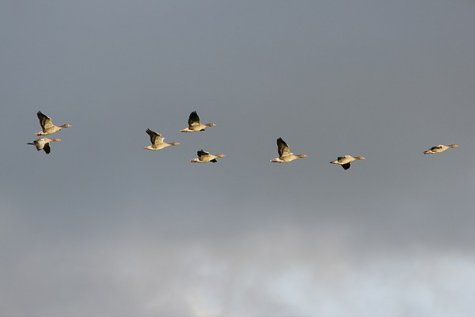Grey goose migration and September usually end together
Photo: Arne Ader
Translation: Liis
Grey geese
Grey goose; Greylag goose Hallhani or roohani
About 250 000 stop in Estonia on their autumn migration. Grey geese are seen only very rarely inland; good places for migration period observations are Matsalu and Silma on the mainland; Käina bay in Hiiumaa; on Saaremaa the Vilsandi surroundings, Küdema bay, Linnu- and Mullutu-Suurlahe, and there are more good places. In passing flight they can even be seen above Tallinn. In East Estonia solitary grey geese can be seen in large migrant flocks of bean geese and white-fronted geese.
The greylag geese are the largest and heaviest (weight two up to four kilos) among the so-called grey geese and the brightest-looking. Watching the wild goose flight triangles we notice the markedly light leading edges of the wings, which we don’t see in the other geese, in the modestly brownish grey plumage of the greylag geese, and the loud quacking seems somehow familiar – after all we have to do with the forbears of domestic geese.
If you manage to meet the wary birds for instance foraging in a shore meadow you are certain to notice the pinkish orange beak and legs. The young birds can be distinguished from the adults by their greyish pink legs.
The grey goose migration can be followed in the e-Biodiversity pages: HERE









